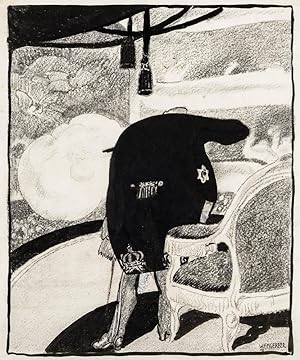henri matisse (Mehr als 12.000 Ergebnisse)
Produktart
- Alle Produktarten
- Bücher (11.628)
- Magazine & Zeitschriften (100)
- Comics (8)
- Noten
- Kunst, Grafik & Poster (251)
- Fotografien (8)
- Karten
-
Manuskripte &
Papierantiquitäten (132)
Zustand
Einband
Weitere Eigenschaften
- Erstausgabe (1.848)
- Signiert (269)
- Schutzumschlag (1.550)
- Angebotsfoto (5.348)
- Kein Print-on-Demand (11.984)
Gratisversand
Land des Verkäufers
Verkäuferbewertung
-
Augsburg, Alexander Weissenhorn, 1537. Folio. Bound in a late medieval liturgical manuscript-leaf of vellum with handpainted capitals in blue and red, over cardboard-binding, and housed in a vellum-box. Title-page with a small paper-restoration to the blank, outer margin, far from affecting printing or illustration. Light brownspotting throughout, but overall a truly excellent copy with no significant flaws. The woodcuts are all clear bright. (6), CII ff. Large woodcut title-illustration and 18 large woodcut illustrations in the text (measuring 10,8x14,3 cm.). Extremely scarce first edition, first printing (with the 1537-title-page), of the very first translation of the Odyssey into any vernacular language. This monumental work represents a milestone in the history of classical literature and marks the beginning of the dissemination of the Homeric works to a wider Renaissance-audience. Not only is this the first German translation, in the exceedingly scarce first printing, and the first translation into any vernacular language, of one of the most important works in the history of literature, antiquity, and Western culture - one of the oldest extant works of literature still read by contemporary audiences -, it is also the very first edition of any Homerian work to appear in any language other than Greek or Latin, and as far as we can see, also the first illustrated edition of this masterpiece to appear, containing the very first printed illustrations of Homer's Odyssey. Together with the Bible, Homer's Odyssey constitutes one of the most influential texts in world history, and the present edition constitutes the forerunner of the thousands of translated editions available today. "This is the first modern-language translation of the "Odyssey". Thirty printings of Latin translations of the Odyssey and Iliad had been produced in German-speaking territories before it, and Schaidenreißer's translation represents the Humanist push for the dissemination of ancient texts to an audience beyond traditional learned circles.Translators feared that the less educated could misunderstand or misuse classical thought, but believed the benefits were great enough to attempt the undertaking. For these reasons, 16th-century translators took steps to ensure a 'proper' understanding of classical authors. Schaidenreißer (ca. 1500-1573) employs a contextualizing introduction and illustrations that highlight the most pedagogically useful content to make the story relevant to readers of Reformation-era Germany and to downplay morally ambiguous content." (From the exhibition at the Beineke-library, Yale). The book is wonderfully printed, on large paper of excellent quality, and with many large woodcut illustrations. The illustrations, which are of enormous importance in the history of the reception of the Odyssey, are attributed to the school of Hans Weidiz (Röttinger) or Jörg Breus. "The "Iliad" and the "Odyssey" have inspired artists in all periods and mediums. The dramatic scenes and detailed descriptions invite visual representation and stimulate creative interpretation. Ancient artists depicted scenes from the Homeric epics on vases, wall paintings at Pompeii, and miniature marble Roman tablets. A handful of surviving illustrated manuscripts suggest the possibilities for illustrating and decorating the texts.Since the sixteenth century, artists and sculptors have portrayed many scenes and characters from the Iliad and the Odyssey as both narrative and allegory. Giulio Romano, Peter Paul Rubens, Angelica Kauffmann, Nicolas Poussin, Claude Lorrain, Eugène Delacroix, Auguste Rodin, Georgio de Chirico, Henri Matisse, and Andy Warhol (after de Chirico) are just a few examples.Early printers of Homer focused on making the texts of the epics available for study rather than producing expensive illustrated editions. It didn't take long, however, for printers to discover that illustrations could expand their audience and potential profits." (University of Chicago Library). The present edition represents the earliest example of this endeavor considering the Odyssey and inscribes itself in an ancient tradition that goes back to early Greek vases. The philologist, author, and humanist Simon Schadenreisser (1497-1572) is today primarily remembered as the seminal first translator of the Odyssey into a modern language and thus as the founder of the tradition of translating Homer. "Schaidenreisser's prose translation of the "Odyssey" represents an obviously important landmark in the reception of the literature of antiquity in German sixteenth century" ("Odyssea. Zu Teütsch transsferiert durch Simon Schaidenreisser. Faksimiledruck der Erstausgabe Augsburg 1537", ed. by Günther Weydt and Timothy Sodmann (Book Review)). "In German-speaking lands, the Odyssey initially fared much better than the Iliad, perhaps because Odysseus? s adventures could be packaged as a hybrid of travel narrative and popular romance. A 1570 reprint of the 1537 German translation of the Odyssey by Simon Schaidenraisser promises its readers "a beautiful, useful, and funny description of the life, luck, and misfortune" (ein schone nutzliche und lustige Beschreibung von dem Leben, Gluck und Ungluck) of its hero, while the original 1537 translation advertises the poem as "very delicate and funny" (aller zierlichsten und lustigen), phrasing that accords with the common tendency (stemming from Aristotle [Poetics 1453a]) to view the Odyssey as a comic poem, or at least as a "tragedy with a happy ending" (tragedia a fin lieto), as the Italian literary critic Giraldi Cinzio termed it (Cinzio 1554, 220 - 4)" (Jessica Wolfe in: Cambridge Guide to Homer, p. 497). The first edition of this landmark printing is of the utmost scarcity. We have not been able to locate one single complete copy for sale at auctions within the last 50 years anywhere in the world. OCLC lists three copies worldwide, two in the US, one in the UK. Goedeke II: 319,3Graesse III: 334 Moss: I, 542.
-
RARE COLLECTION de 1000 Affiches d'Exposition de Galeries d'Art originales" dont 260 entoilées et gravées entre 1950 et 1980 en litho, la majorité par MOURLOT, Alphonse CHAVE, MAEGHT
Anbieter: Mad-Museum, Velleron, Frankreich
Kunst / Grafik / Poster Erstausgabe
Pas de couverture. Zustand: Très bon. Edition originale. "RARE COLLECTION de 1000 Affiches d'Exposition de Galeries d'Art originales" dont 260 entoilées et gravées entre 1950 et 1980 en litho, la majorité par MOURLOT, Alphonse CHAVE, MAEGHT / Les artistes exposés sont PICASSO, Marc CHAGALL, Henri MATISSE, Fernand LÉGER, Raoul DUFY, Max ERNST, VAN DONGEN, DALI, VAN GOGH, TOULOUSE-LAUTREC, Maurice UTRILLO, LORJOU, LURÇAT, Edvard MUNCH, MIRO, Yves BRAYER, Georges BRAQUE, Alberto GIACOMETTI, MOLNÉ, Bernard BUFFET, Paul COLIN, Léonor FINI, Marie LAURENCIN, Jean COCTEAU, Jean MARAIS, Raymond MORETTI, Jacques PRÉVERT, CARZOU, CLAVÉ, Rudolph POLDER, André GILL, DAUMIER, Gustave DORÉ, Jacques VILLON, Georges LEMMEN, TOBIASSE, George CATLIN, CALDER, DERAIN, MAN RAY, A. BONNEFOIT, KANDINSKY, ROHNER, Paolo BONI, ALECHINSKY, Robert COMBAS, RAZZIA, VENARD, AMBROGIANI, SAVIGNAC, FOLON, DUBOUT, Hervé MORVAN, Pierre-Laurent BRENOT, Jules CHÉRET, Jean-Gabriel DOMERGUE, PANAMARENKO, Jean TINGUELY, Etc., Etc., Etc. / La totalité est en très bon état voir parfait / Collection visible sur rendez-vous près d'Avignon (Téléphone: 04 90 38 56 82).
-
Six Signed Proofs of Original Etchings by Henri Matisse. Illustrations for Ulysses by James Joyce, published by the Limited Editions Club
Verlag: The Print Club, NY, 1935
Anbieter: Weller Book Works, A.B.A.A., Salt Lake City, UT, USA
Signiert
#77 of 150. Each print is titled, numbered, and signed by Matisse. The first 250 copies were signed by Joyce and Matisse. The final 1250 were signed only by Matisse Very good with faint label residue on foot of inside cover. Cloth on flaps faintly faded near edges. Slight bumping and creasing of title page. Prints are near fine with tissue protectors. Prospectus has gentle creasing and rubbed edges. Folio.
-
Six signed proofs of original etchings for Ulysses.
Verlag: New York: The Print Club, 1935, 1935
Anbieter: Peter Harrington. ABA/ ILAB., London, Vereinigtes Königreich
Signiert
Signed limited portfolio, number 61 of 150 sets of six plates, each of which are signed numbered and titled by Matisse. The plates comprise the artist's illustrations for the first illustrated edition of James Joyce's Ulysses, published by the Limited Editions Club the same year. Within weeks of the lifting of the US ban on Ulysses (6 December 1933), Limited Editions Club impresario George Macy approached Joyce about a special edition of the book, and by February 1934 he was en route to Paris to speak to Matisse about illustrations. Matisse accepted, and produced etchings for six of the eight episodes of Ulysses that have their counterparts in Homer's Odyssey: "The Calypso Episode"; "Aeolus, Cave of the Winds"; "The Cyclops" (described by Aragon as "the only true image of pain in Matisse's work"); "The Episode of Nausicaä"; "The Circle Episode"; and "Symbolic Landscape: Ithaca". While Joyce was delighted with the idea of Matisse illustrating his masterpiece, he was apprehensive that the artist might not have read Ulysses. Matisse had been given a copy of the French translation by Joyce scholar Stuart Gilbert, but his neighbour, the writer Dorothy Bussy, remarked that he was "in a complete fog about it" (Goodwin, p. 91). She lent him a copy of Gilbert's seminal James Joyce's Ulysses: A Study (1930). Regardless of whether Matisse read Ulysses in its entirety, Joyce approved of his decision to emphasize the classical source text: "I telephoned Joyce and spoke to him. We are in complete agreement regarding the character that I want to give to the illustration" (Matisse, letter to Simon Bussy, 11 August 1934). Aragon, p. 198; Henri Matisse, L'oeuvre gravé, 235-240; Slocum & Cahoon, 22. See William Goodwin, "'A Very Pretty Picture M. Matisse But You Must Not Call It Joyce': The Making of the Limited Editions Club Ulysses", Joyce Studies Annual Vol. 10, Summer 1999, pp. 85-103. Folio. Six soft ground etchings printed on Arches vellum paper, each separated by original tissue guards. Sheet sizes: 41.3 x 31.5 cm. In the brown cloth folding portfolio, as issued. Housed in a black quarter morocco solander box by the Chelsea Bindery. Spine of portfolio worn, joints tender. Contents clean.
-
A Book of Cats, Being Twenty Drawings by Foujita [UNIQUE COPY, WIYH THE ADDITIONAL SUITE OF PLATES, THREE SIGNED IN PENCIL]
Verlag: Covidi Friede, New York, 1930
Anbieter: ERIC CHAIM KLINE, BOOKSELLER (ABAA ILAB), Santa Monica, CA, USA
Erstausgabe Signiert
Hardcover. Zustand: vg to vg+. First edition. 1/500. Folio. 84pp. [1]. Housed in a new illustrated custom red leather clamshell box with gilt tooling and lettering on the front cover and spine. The plates are all individually protected in sheets of mylar housed separately in a red cloth chemise. Red buckram boards with silver lettering on the front cover. Includes the publisher's original mylar dust jacket. Pages uncut. #49 from this limited edition of 500 copies hand-numbered and signed by Foujita on the colophon. Contains an unopened page at the colophon. Each copy was issued with a suite of 20 additional loose plates of the images from the book, printed on Japanese vellum. All known copies of these additional suites contained the artist's pencil signature on only one of the plates. This unique copy contains 3 plates hand-signed by the artist in pencil: "Atarah and Hesione," "Ahinoam" and "Pasithea." The loose "Ahinoam" plate with our copy is surprisingly printed on arches paper instead of the traditional vellum. The most rare and sought after book on cats, this delightful work contains 20 illustrated plates of etchings of cats and kittens by acclaimed Japanese-French artist Leonard Tsuguharu Foujita (1886-1958). Each cat image has its own name and is accompanied by a poem about the respective cat by British writer Michael Joseph (1897-1958). These images display an incredible amount of personality and subtlety, really showing the character of cats as they pose, rest or are depicted in a state of play. All images have the artist's dated signature in English and Japanese printed in the plate. All bound pages are printed on Arches paper. Binding with some light sunning to the edges of the covers. Minor rubbing to corners. Minor smudging and a few small scratches to the covers. Interior with minor foxing to the front and rear endpapers, as well as the interior front cover. A few sporadic small water spots to a number of pages throughout, including a few of the plates (mostly in the margins). All plates from the loose suite are clean. Interior back cover with the sticker of famed San Francisco bookseller Paul Elder & Co. Original mylar jacket with some chipping, sunning and closed tears. Binding in very good+, interior in very good condition overall. Leonard Tsuguharu Foujita (è ¤ç"° å £æ », 1886-1968) aka Tsuguharu Fujita, was among the most acclaimed Japanese artists in the West during the 20th century. Known primarily as a painter and printmaker, Foujita pioneered a form which applied Japanese techniques to western-style paintings. After studies in both traditional Japanese art and Western art, he moved to Paris in 1913 to pursue his career. There he lived in the famed Montparnasse neighborhood, and quickly became friends with many of the most famous names in the art world of the time, including Juan Gris, Pablo Picasso and Henri Matisse. He was most noted for his works depicting cats and for nudes, acheiving more financial success than many of his acclaimed contemporaries, during this period. He lived in France until 1931, when he moved to South America, later returning to Japan from 1933 until the end of WWII. He returned to Europe after the war and finally became a naturalized French citizen in 1955. He lived in France until his death in Switzerland in 1958.
-
Estampes. Introduction par Robert Rey. Textes par Jean Paulhan, Jacques de Lacretelle, René Huyghe, André Chamson, Jean-Louis Vaudoyer, Louise de Vilmorin, Jean Cocteau, Jean Cassou, Pierre Mac Orlan, André Maurois, Jérome et Jean Tharaud & Daniel-Rops.
Verlag: Paris & New York: L'Image Littéraire & R. Finelli-Feugère, [1950], 1950
Anbieter: Peter Harrington. ABA/ ILAB., London, Vereinigtes Königreich
Erstausgabe Signiert
First edition, first printing, number 8 of 150 copies signed by all the contributors, with each print numbered and signed by the respective artist and Robert Rey. This copy with an additional suite of 46 sheets with colour separations of Picasso's print housed in separate wrappers, lettered in black. The print titles included are: Braque, "Nature morte au huitres"; Brianchon, La neige a auteuil; Chagall, La sirène; Desnoyer, Liseuses au bord de mer; Dufy, Le casino de la jetée a Nice; Laurencin, Portrait de femme en rouge; Matisse, Nature morte au magnolia; Picasso, La cassarole Émaillée; Utrillo, Le jardin de Montmagny; Van Dongen, Tête de femme; Vlaminck, Les blés dans la perche; and Waroquier, Dolori sacrum. Folio. Unbound sheets printed on Van Gelder Zonen wove paper in white wrappers, front cover lettered in red. With glassine dust jacket, and the publisher's blue morocco clamshell box. All contained in the original card packing box. 12 colour woodcuts after each of the artists printed on Van Gelder Zonen wove paper with one edge untrimmed. Sheet sizes: 46.5 x 36 cm. Two short closed tears to front wrapper and glassine, light scattered foxing, otherwise a bright, unfaded set.
-
4° (335x260 mm). XIV, [3], [16 pages lettered A to P], [3], 92, [14] pages. With thirteen original etchings by Picasso, pulled by Louis Fort; sixty-seven wood engravings cut by George Aubert after Picasso's drawings; and 16 pages reproducing lineblock dot and line drawings. Handsomely bound in a custom binding by René Kieffer, with his signature on the lower turn-ins of the upper cover and his stamp pasted on the verso of the second flyleaf. Linen pastedowns, linen and marble-paper flyleaves. In marbled slipcase. Small stain on plate no. V of the table of etchings and on facing page (a blank), otherwise in pristine condition.Beautiful centennial edition of Balzac's short story, Le Chef-d'oeuvre inconnu – originally published in the newspaper L'Artiste in August 1831 with the title 'Maître Frenhofer' – commissioned by Picasso's dealer, Ambroise Vollard, and illustrated with thirteen original etchings by the Spanish master, sixty-seven wood engravings cut by George Aubert after his drawings, and sixteen pages reproducing lineblock dot and line drawings. This edition was printed in 305 copies, of which 240 – including the present one, no. 230 – were printed on Rives wove paper. Admired by such artists as Paul Cézanne and Henri Matisse, Balzac's story tells the tale of an ageing seventeenth-century artist named Frenhofer who obsessively works on a canvas he keeps hidden for years. When two young painters and admirers of Frenhofer's work finally manage to see the canvas, they are shocked by what they discover to be an indistinguishable mass of tangled brushstrokes and layers of paint. Deciding that the older artist must have gone insane, the two young artists deride Frenhofer who subsequently destroys all his works and commits suicide. The story of this dramatically misunderstood yet visionary hero was well suited for the avant-garde artists pursuing careers in Balzac's wake; indeed, in 1904 Cézanne exclaimed outright 'Frenhofer, c'est moi' (J. Medina, Cézanne and Modernism: The Poetics of Painting, 1995). Arguably the most innovative and ground-breaking artist of the Modern period, Picasso was no exception and identified heavily with Balzac's tragic protagonist, so much so that he later moved his studio to the very seventeenth-century townhouse believed to have been the setting for the opening scene of Frenhofer's tale. It is perhaps hardly a coincidence that the dealer of both Cézanne and Picasso was the great avant-garde champion and mentor Ambroise Vollard, who, in addition to dealing art, was also an avid collector, biographer, and publisher. In 1927, twenty-six years after mounting Picasso's first Paris exhibition in 1901, Vollard asked the Spanish artist to illustrate a centennial edition of Balzac's text. Although Picasso – widely recognized as one of the greatest printmakers of all time – counts among the most prolific book illustrators of the twentieth century, the etchings he produced for this edition in fact bear little relation to Balzac's text; rather, the artist seems to have used the opportunity to reflect more generally on one of his favourite subjects: the artist-model relationship and the act of creation itself. It is perhaps for this reason that the final product – a true meditation on Art – is itself a work of art, ranking among one of the most beautiful artist's books of the twentieth century.Cramer, Picasso. Catalogue raisonné des livres illustrés, no. 20; Bonet, Carnets, no. 690, pl. 175; Philobiblon, One Thousand Years of Bibliophily, no. 283. Book.
-
MATISSE, Henri. Poésies de Stéphane Mallarmé. [2], 153, [8] pp. Illustrated by Henri Matisse with 29 etchings printed in black. Small folio, 330 mm. x 250 mm., bound in original printed wrappers, and housed in the original calf-backed chemise and slipcase. Lausanne: Albert Skira & Cie., 1932. A superb copy of this masterpiece of twentieth century book illustration. The Matisse etchings for Mallarmé's Poésies are renowned for their delicate and simple design. "At the beginning of the decade, the etchings he made to illustrate an edition of Mallarmé's poems had an almost neoclassical quality to their elegant, filament-like lines -- a quality fully appropriate to the mythological themes of antiquity that they introduced into Matisse's art of this period" (Elderfield, Henri Matisse: A Retrospective, p. 357). This is considered "Skira's most beautiful book" (Castleman); it represents one of the snowy peaks of the twentieth-century livre d'artiste. This copy is one of 95 copies on velin paper, signed by Matisse, from a total edition of 145. A fine copy with some light wear to the delicate chemise and slipcase. Duthuit 5. The Artist and the Book 196. From Manet to Hockney 95. A Century of Artists Books 92. Elderfield, Henri Matisse: A Retrospective 295-300. Andel, Avant Garde Page Design 449.
-
Six Signed Proofs of Original Etchings by Henri Matisse Made to Serve as Illustrations for Six Episodes in James Joyce's 'Ulysses' which have their Counterparts in Homer's 'Odyssey'.
Verlag: New York The Print Club, 1935
Anbieter: Shapero Rare Books, London, Vereinigtes Königreich
Buch Signiert
Limited edition, number 23 of 150 copies, numbered and signed by Matisse, folio (41.5 x 32 cm); complete set of six etchings on Arches vellum paper, each signed, numbered and captioned in pencil by Matisse; brown cloth folding portfolio. frieze23 Rare suite of etchings, limited to only 150 sets, each plate signed in pencil by Matisse. Number 23 from an edition of 150. The plates depict episodes in the edition of James Joyce's Ulysses published in 1935 by the Limited Editions Club and illustrated by Matisse. They comprise: 'The Calypso Episode'; 'Aeolus, Cave of the Winds'; 'The Cyclops'; 'The Episode of Nausicaä'; 'The Circle Episode'; and 'Symbolic Landscape: Ithaca.'.
-
MATISSE, Henri. Pasiphaé, Chant de Minos. Text by Henri de Montherlant. 121, [1], [6] pp. With 147 linoleum engravings by Matisse, including 50 printed in black (of which 18 are full-page), 84 initial letters and repeated head-pieces printed in red, with front and back covers printed in blue and white. Folio, 330 x 250 mm., loose as issued in the original wrappers and linen slipcase. Paris: Martin Fabiani, 1944. One of 200 copies on velin d'Arches filigrané paper, from a total edition of 250. Signed by Matisse on the justification page. Matisse's Pasiphaé is a thrilling work. All of the original linoleum plates were destroyed after the printing of this edition. As with almost all his books, Matisse was responsible for the brilliant design, which combined black, white and red colours to create one of the most appealing artist books of the twentieth century. "A contemporary retelling of the story of Pasiphaé and the Minoan bull was the impetus for one of Matisse's most intensive printmaking experiences. Working with linoleum, a fairly easy material to use, Matisse cut many blocks of each image to achieve the perfect flow of line and relationship of forms. Intent on matching the spirit and ambiance of the classic tale, Matisse took as his model ancient Greek blackground vase painting" (Castleman). A superior copy, suffering only from some scattered light offsetting. The chemise and slipcase has the slightest wear but is completely sound. PROVENANCE: A private American collector. Claude Duthuit, Henri Matisse, Catalogue raisonné des ouvrages illustrés No.10. The Artist and the Book 198. From Manet to Hockney 112. Rauch 169. A Century of Artists Books 113. Johnson, Artists' Books in the Modern Era 1870-2000 No. 102. Bidwell, Graphic Passion, No. 21.
-
Le Chef-D'Oeuvre Inconnu. Eaux-fortes originales et dessins gravés sur bois par Pablo Picasso.
Verlag: Paris, Ambroise Vollard, Editeur, 1931,, Paris, 1931
Anbieter: Libreria Antiquaria Pregliasco, Torino, Italien
Zustand: molto buono. in-4 (325x250 mm), pp. XIV, con 67 composizioni figurative astratte di Picasso incise in legno da Aubert, pp. 92 di testo, (8), 13 acquaforti originali di Picasso f.t. Artistica legatura d'amatore, firmata da René Kieffer in pieno marocchino marrone interamente decorata con giochi di filetti a secco, punteggiata in oro, bordura in marocchino grigio, titolo in oro al dorso, taglio sup. dorato., sguardie in seta grigia, in elegante astuccio. Copertina originale conservata. Precede una prefazione del pittore Albert Besnard. Tiratura a 340 esemplari complessivi: il presente è il n. 230 dei 240 sur "papier de Rives". Ammirato da artisti come Paul Cézanne e Henri Matisse, il racconto di Balzac narra la storia di un anziano artista del XVII secolo di nome Frenhofer che lavora ossessivamente a una tela che tiene nascosta per anni. La storia di questo eroe drammaticamente incompreso ma visionario si adattava bene agli artisti d'avanguardia che intraprendevano una carriera sulla scia di Balzac; infatti, nel 1904 Cézanne esclamò apertamente "Frenhofer, c'est moi" (Joyce Medina, Cézanne and Modernism: The Poetics of Painting, SUNY Press, 1995). L'opera è illustrata da 67 disegni di Picasso, xilografati da George Aubert e da 13 acquaforti originali di Picasso a piena pagina fuori testo, stupende, in cui l'artista cominciò ad utilizzare il tratteggio donando forza all'orizzonte prospettico della scena grazie al chiaroscuro. "En 1927 Vollard, à chargé l'artiste d'illustrer une réédition spéciale d'une nouvelle de Balzac datant de 1837. L'histoire de Balzac se situe au 17e siècle dans un studio de la rue des Grands Augustins à Paris . Dans les années ?30, par un étrange coup du destin, il loua le numéro 7, rue des Grands Augustins que lui et d'autres croyaient être la maison dans laquelle l'histoire commence. C'est à cette adresse en 1937, exactement cent ans après la dernière version de Balzac, que Picasso a peint son célèbre chef-d'oeuvre, Guernica". Sebbene Picasso - ampiamente riconosciuto come uno dei più grandi incisori di tutti i tempi - sia tra i più prolifici illustratori di libri del XX secolo, le acqueforti che realizzò per questa edizione hanno in realtà ben poco a che fare con il testo di Balzac; piuttosto, l'artista sembra aver colto l'occasione per riflettere più in generale su uno dei suoi temi preferiti: il rapporto tra artista e modello e l'atto stesso della creazione. È forse per questo che il prodotto finale - una vera e propria meditazione sull'arte - è esso stesso un'opera d'arte, annoverabile tra i più bei libri d'artista del XX secolo. Esemplare magnifico, a pieni margini. Chapon, Le peintre et le livre, p.281:Le peintre et le livre, p.281: ''Picasso a multipié les manières de créer.il execute une série de variations constituées de droites, de courbes, de figures géometriques. Aux extrémités des points.''. Cramer n.20. Rauch n.53. Book.
-
Estampes. Introduction par Robert Rey. Textes par Jean Paulhan, Jacques de Lacretelle, René Huyghe, André Chamson, Jean-Louis Vaudoyer, Louise de Vilmorin, Jean Cocteau, Jean Cassou, Pierre Mac Orlan, André Maurois, Jérome et Jean Tharaud & Daniel-Rops.
Verlag: Paris & New York: L'Image Littéraire & R. Finelli-Feugère, [1950], 1950
Anbieter: Peter Harrington. ABA/ ILAB., London, Vereinigtes Königreich
Erstausgabe Signiert
First edition, first printing, number 29 of 150 copies signed by all the contributors, with each print numbered and signed by the respective artist and Robert Rey. This copy with an additional suite of 46 sheets with colour separations of Picasso's print housed in separate wrappers, lettered in black. The print titles included are: Braque, "Nature morte au huitres"; Brianchon, La neige a auteuil; Chagall, La sirène; Desnoyer, Liseuses au bord de mer; Dufy, Le casino de la jetée a Nice; Laurencin, Portrait de femme en rouge; Matisse, Nature morte au magnolia; Picasso, La cassarole Émaillée; Utrillo, Le jardin de Montmagny; Van Dongen, Tête de femme; Vlaminck, Les blés dans la perche; and Waroquier, Dolori sacrum. Folio. Unbound sheets printed on Van Gelder Zonen wove paper in white wrappers, titles to front cover in red. With glassine dust jacket. Housed in the publisher's blue morocco clamshell box, titles to front cover and spine gilt. All contained in the original card packing box. 12 colour woodcuts after each of the artists printed on Van Gelder Zonen wove paper with one edge untrimmed. Sheet sizes: 46.5 x 36 cm. Closed tear to front wrapper and glassine, hinge of clamshell box split, minor foxing in places otherwise a bright unfaded set.
-
Ulysses.
Verlag: The Limited Editions Club, New York, 1935
Anbieter: Jeffrey H. Marks, Rare Books, ABAA, Rochester, NY, USA
With an Introduction by Stuart Gilbert. xvi [2] 363 [1] pp. Illustrations by Henri Matisse. Folio, publisher's embossed gilt cloth in publisher's slipcase. No. 1142 of 1500 copies; signed by Henri Matisse in pencil and by James Joyce in ink. Very slight tanning of (inner) hinges; but just about a fine copy. The fragile hinges are fine, which is unusual for this book. The publisher's box has a little bit of wear to the fore-edges and extremities, but is clean, tight and strong. Laid in is the publisher's four-page prospectus and postcard announcement for this book, plus an additional postcard announcement of shipment addressed to its first owner, in which the purchaser is informed that she was one of the fortunate Limited Editions Club members who are being shipped a copy signed by both Matisse and Joyce. The postcard goes on to describe how the Club tried to handle the imbalance between the number of members who wanted the Joyce signatures and the number of copies Joyce agreed to sign. We have never seen another copy of this postcard.
-
Ulysses.
Verlag: Limited Editions Club, New York, 1935
Anbieter: Raptis Rare Books, Palm Beach, FL, USA
Erstausgabe Signiert
First illustrated edition of Joyceâ s landmark Ulysses, one of only 250 examples signed by James Joyce in pen and Henri Matisse in pencil, with 26 illustrations by him, one of the 20th-centuryâ s most desirable illustrated books, combining the work of two great modern artists. Large quarto, original gilt-stamped pictorial brown cloth, original slipcase. In fine condition with the rare original slipcase which is in good condition and original glassine jacket. With an introduction by Stuart Gilbert. An exceptional example, most rare in this condition and in the seldom seen glassine jacket. One of the most arresting collaborations in 20th-century literature. "It was a great idea to bring them together; celebrities of the same generation, of similar virtuosity" (Wheeler, 15). The 26 beautiful full-page illustrations by Matisse accompany the text of Joyce's Ulysses, including six soft-ground etchings with reproductions of the sketches on blue and yellow paper. "One of the very few American livres de peintres issued before World War II. According to George Macy [this work's designer], who undertook this only American publication of Matisse's illustrations, he asked the artist how many etchings the latter could provide for $5000. The artist chose to take six subjects from Homer's Odyssey. The preparatory drawings reproduced with the soft-ground etchings (Matisse's only use of this medium) record the evolution of the figures from vigorous sketches to closely knit compositions" (Artist and the Book 197).
-
Hardcover. Zustand: Fine. First Edition. Copy #1365 of 1500 numbered copies, one of the 250 copies signed by both James Joyce and Henri Matisse. A fine copy in the original gilt-stamped brown cloth, entirely unfaded with tight hinges; in a solid and intact copy of publisher's slipcase (the book has a couple of faints spots or bruises to the deckles on foredge; the slipcase has light wear and a few marks). Illustrated with 6 original etchings and 20 photomechanical reproductions by Henri Matisse Housed in a sturdy custom brown cloth clamshell box with black leather spine stamped in gilt. One of the most storied illustrated books of the 20th century. Although the tale is often erroneously told that Matisse thought he had been hired to illustrated Homer (and did so), Alfred Barr wrote "Matisse remarked that he had observed how Joyce's Ulysses was divided into episodes based on Homer's Odyssey . Macy accepted the suggestion and Matisse went to work." (Matisse: His Art and His Public, 1951).
-
ANTIQUE IMPRESSIONIST FLORAL STILL LIFE OIL PAINTING STYLE OF MATISSE MA ORIGIN
Verlag: 1900-1949, 1949
Anbieter: 21 East Gallery, Villa Park, IL, USA
Kunst / Grafik / Poster Signiert
Medium: Oil This absolutely beautiful original early 20th century antique oil painting on board by an unknown artist is approximately 16 1/4 x 20 inches. The framed piece measures approximately 20 1/2 x 24 1/4 inches. it is not signed. A fabulous piece by a talented artist in the style of French master Henri Matisse. Last origin was north central Massachusetts. Thanks for looking.On Jun-12-11 at 16:08:52 PDT, seller added the following information: Sellers: Get your own map of past buyers. Fast. Simple. Region of Origin: Unknown Size Type: Medium (Up to 30").
-
Madeleine - Étude.
Verlag: Paris: 1950-51, 1950
Anbieter: Peter Harrington. ABA/ ILAB., London, Vereinigtes Königreich
Erstausgabe Signiert
Edition of 200. Signed and numbered in pencil lower right by the artist. Duthuit 645 Lithograph on chine appliqué support on Arches vellum paper. Image size: 21.4 x 19.5 cm. Sheet size: 44.9 x 32 cm. Framed size: 59 x 49 cm. Excellent condition. Presented in an ornate gilt frame with conservation acrylic glazing.
-
Picasso, Pablo. Minotaure endormi contemplé par une Femme (Marie Thérèse en Vestale)
Erscheinungsdatum: 1933
Anbieter: GALERIE HIMMEL, Dresden, Deutschland
Signiert
Zustand: sehr guter Zustand. Picasso, Pablo. Minotaure endormi contemplé par une Femme (Marie Thérèse en Vestale).1933. Radierung / Strichätzung & Kaltnadel, partiell geschliffen, in Schwarz, auf chamois Vollard-Bütten. Originale Künstlergrafik, von Pablo Picasso. Auflage 250 Exemplare. 19,1 x 26,6 cm (Darstellung / Platte), 35 x 45 cm (Blatt).Bloch 193. Geiser 352 B / d. Auch unter dem Titel Marie-Thérèse, en vestale, weillant le minotaure endormi geläufig (deutsch: Marie-Thérèse als Vestalin, den schlafenden Minotauros betrachtend; hier der Titel nach WVZ Bloch, S. 68). - Blatt Nr. 86 der Suite Vollard, entstanden und datiert am 18. Mai 1933. - Dieses Exemplar aus der 1939 bei Ambroise Vollard in Paris erschienenen Auflage. Die Auflage bei Bloch beschrieben: 250 épreuves sur petit papier vergé de Montval (44,5 x 34,0 cm) (Vgl. WVZ Bloch I, S. 56). - Provenienz: Sammlung Dr. Max Hasse, Hamburg. Vollrandiges unbeschnittenes Exemplar. Hervorragend erhalten. Sehr guter Zustand.Pablo Picasso (1881 Málaga 1973 Mougins). Spanischer Maler, Grafiker und Bildhauer, Begründer des Kubismus und zentraler Vertreter der Klassischen Moderne. Erster Unterricht beim Vater. Ab 1891 Schule für Bildende Künste in A Coruna, 1895-97 Kunstakademie in Barcelona sowie 1897 Königlichen Akademie in Madrid. Ab 1900 mehrere Reisen und schließlich Übersiedlung nach Paris, wo er durch Kunsthändler wie Ambroise Vollard und später Daniel-Henry Kahnweiler gefördert wurde sowie Anschluss an avantgardistische künstlerische Strömungen fand. Freundschaft mit Künstlern wie Gertrude Stein, Henri Matisse oder Guillaume Appolinaire. Um 1908/09 begründete er gemeinsam mit George Braque die neue Stilrichtung des Kubismus, womit er sich dauerhaft die führende Rolle bei der Geburt der Klassischen Moderne sicherte. Rechts unten in Bleistift signiert: Picasso. In der Platte links unten spiegelschriftlich datiert: Paris 18. Mai XXXIII. Wasserzeichen Vollard. 19,1 x 26,6 cm (Darstellung / Platte), 35 x 45 cm (Blatt).
-
Signed Photograph: "From My Window at An American Place, North"
Verlag: Stieglitz, New York, 1931
Anbieter: Manhattan Rare Book Company, ABAA, ILAB, New York, NY, USA
Erstausgabe Signiert
framed. Zustand: Very Good. IMPORTANT ALFRED STIEGLITZ PHOTOGRAPH, SIGNED AND INSCRIBED BY STIEGLITZ. Alfred Stieglitz's (1864 - 1946) influence on American art and culture cannot be overstated. He has been justly celebrated for the pioneering exhibitions of modern European art that he presented at 291, the gallery that he ran between 1905 and 1917. There Stieglitz introduced American audiences to the works of Pablo Picasso, Henri Matisse and George Braque. He championed early American modernist painters, embracing those such as Georgia O'Keeffe (his muse and wife), Marsden Hartley, and Charles Demuth first at 291 and then at his subsequent galleries The Intimate Gallery (1925 - 1929) and An American Place (1929 - 1946). His greatest passion, though, was photography. During Stieglitz's youth, photography's cumbersome tools and technical requirements restricted its use to descriptive and recording purposes. Stieglitz understood that photography, much like painting and sculpture, could be a vehicle for artistic expression and by the time he died few people doubted it. He elevated and promoted the art of photography through Camera Work, the classic journal he ran from 1903 through 1917; through his influential galleries; and of course through his own photographs. As early as 1915 Stieglitz began photographing the city from his windows: either taking a series of quick, successive photographs or returning to a particular view throughout the year. As his energy and health declined later in life, he photographed almost exclusively from the windows of his longtime home on the 30th floor of the Shelton Hotel and from the windows of An American Place in midtown Manhattan. The current photo was taken in either November or December of 1930 or early 1931 and looks north from An American Place. It is conceptually far removed from Stieglitz's earlier, painterly evocations of New York City. The photograph emphasizes the growing fragmentation of modern life and also manifests Stieglitz's increasing removal from the hustle and bustle of New York City. The artist transforms the dramatic high rises into solid geometric forms by cropping the tallest buildings. Those skyscrapers manage to catch and reflect the sun's rays while casting deep shadows over the older, smaller buildings. In the foreground one sees the textures and typography visible from the window of the 17th floor gallery, but even some of these details are heavily shadowed by taller buildings. Stieglitz clearly held this particular print in high regard, as it is signed in pencil along with a request that it be returned to An American Place. He later gifted it to Georgia Englehard (American, 1906 -1986), his niece and noted model. During summers spent at the family's Lake George home Engelhard modeled for her uncle and studied painting with his wife, Georgia O'Keeffe. Stieglitz exhibited Engelhard's early paintings at 291 and the uncle and niece corresponded regularly for years. Months after Stieglitz's death in 1946 Englehard created a pictorial homage for Popular Photography that honored the artist's career and included this image, presumably drawn from her own private collection. Following Stieglitz's death Georgia O'Keeffe combed through thousands of her husband's photographs, art, and letters. She carefully assembled a body of work that traces the evolution of Stieglitz's work, from its inception in the 1880's to its rich maturation in the 1930s, and thoroughly documents all aspects of his decisive contribution to the art of photography. O'Keeffe selected the finest examples, including From My Window at An American Place, North, to be donated to "The Key Set" at the National Gallery of Art. and gave other prints that were in his possession to The Art Institute of Chicago, and the Carl Van Vechten Gallery at Fisk University, Nashville. Other prints of this image can be found in the National Museum of Art, Tokyo and private collections. On this print: This print is signed and captioned by Stieglitz ("New York.
-
Eigenh. Brief mit U.
Verlag: Nizza, 18. XI. 1924., 1924
Anbieter: Kotte Autographs GmbH, Roßhaupten, Deutschland
Manuskript / Papierantiquität
2½ SS. auf Doppelblatt. Gr.-8vo. Mit zwei kleinen Handskizzen. Wohl an einen Verleger und vielleicht über die im folgenden Jahr erschienene Monographie über Matisse von Waldemar George "Henri Matisse. Dessins" (Paris, Éditions des Quatre chemins): "[.] il était convenu que la maquette de Votre fascicule me serait communiqué. Vous ne l avez pas faite [.] à la page 39 le dessin est imprimé à l envers et le titre détruit le dessein. Je suis d autant plus étonné de cette faute que je vous l avais deja signalé dans une lettre [.] A Part ça tout est très bien, les réproductions et les textes très bonnes. Croyez bien que je suis vivement contrarié d avoir à vous signaler cette grosse erreur peut-être reparable, qui va gâter votre fascicule et trahi mon dessin [.]". - Die Skizzen zeigen, wie der genannte Fehler durch Überklebung beseitigt werden könne. - Auf Briefpapier mit gedr. Briefkopf der "Brasserie de la Marne".
-
Archive of photographs from the personal files of LIFE photographer Dimitri Kessel
Verlag: v.p., 1960
Anbieter: James Cummins Bookseller, ABAA, New York, NY, USA
Signiert
Approx. 500 gelatin silver prints and some color prints, many SIGNED by Kessel and captioned in his or another hand. A comprehensive, career-spanning archive of the great Ukrainian-born photojournalist Dimitri Kessel (1902-1995), in all, some 500 unique photographs. During his 60-year career, Kessel worked as an industrial photographer, a war correspondent and combat photographer, and a photo essayist for LIFE. During World War II, he sailed on convoy escorts in the North Atlantic, covered the landing of American troops in the Aleutian Islands and the British landing in Greece. He also photographed the Greek civil war. In later years, Kessel lived on the Yangtze River in China for seven months while producing a photo essay for LIFE. He photographed the Andes Mountains in South America and mining operations in Central Africa. Kessel is world famous for the fidelity of his camera recreations of great art, but was also a tough and adventurous news photographer. Comprises: 1: Collection of approx. 400 photos from Kessel's personal files, the majority showing Kessel at work or relaxing with his LIFE co-workers, most ca. 1940s-1960s. Many captioned on front or rear, mounting stains. Locations include Guantanamo, Cuba; Birminham, AL (with Joe Scherschel); Maine; Central America; Cairo; Bangcock. Collegues pictured include Frank Capa, Ed Thompson, Gijon Mili, and Alfred Eisenstaedt. A fascinating record of the ever-smiling Kessel at work and play. 2: Three photographs of a nude model for lingerie ad. Gelatin silver prints. 10-3/16 x 7-15/16 inches, New York: [1934]. Very good. Faint creasing at corners. Docketed on verso in pencil. Three photographs, taken by an unknown photographer, of Dimitri Kessel at work on his first commercial assignment. 3: Photograph of John Hersey on the Yangtze River [With:] two photographs, one of Hersey alone, one of Hersey and Kessel. Gelatin silver print. 9-1/2 x 7-11/16 inches, [China]: [1946]. Some faint creasing to top corners. Docketed on verso; date stamped "Mar 12 1946". Kessel and Hersey were on assignment together in China for LIFE in 1946. Kessel devotes an entire chapter of his memoirs to his time on the Yangtze: "When I checked in, John Hersey, then a contract writer for LIFE, was there. He had been assigned to do a text piece on a farming village called Red Pepper [ . ] John suggested that I accompany him to the village, only about forty miles outside Peking, to make photographs to illustrate his piece. I said, fine, if he would accompany me to the Yangtze to do the text to go with my pictures. New York thought it was a great idea" (Kessel, On Assignment, p. 149). The previous summer THE NEW YORKER dedicated an entire issue to Hersey's HIROSHIMA. His novel, A SINGLE PEBBLE, about an engineer searching for a dam site on the Yangtze, would be based on his time on the river with Kessel. 4: [KESSEL, Dimitri?]. Portrait of Margaret Bourke-White in top hat, clutching a bottle of tequila and taking aim with a toy gun. Gelatin silver print (7-1/2 x 7-1/2 in.). n.p: ca. 1940s. Mounting stains to verso, image fine. 5: Photograph of Viennese gazing at sweets in shop window. Vintage gelatin silver print, SIGNED and docketed on rear with LIFE stamp. 11 x 9-1/8 in. [Vienna: 1948]. Crease at lower left corner, else near fine. Reproduced on p. 167 of ON ASSIGNMENT. 6: Portrait of Henri Matisse taking a stroll in front of the Chapelle Matisse in Vence. Gelatin silver print. SIGNED by the photographer lower right, beneath the image, and dated. 12-1/2 x 8-1/2 inches, [Vence, France: 1951]. Printed circa 1984. Very good. Superb, large portrait of the artist in front of his famous Chapel. 7: Photograph of a Russian Orthodox Church in Uzhgorad, Czechoslovakia. Gelatin silver print. SIGNED , captioned "Uzhgorod, sub-Carpathian Ruthenia," and dated 1937 by the photographer beneath the image. 13-3/8 x 9-5/8 inches, [Uzhgorod, Czechoslovakia: 1937]. Printed circa 1984. Very good. Docketed on the rear with directions to the printer for reduction and placement. Reproduced (evidently from this print) at p. 12 of ON ASSIGNMENT: DMITRI KESSEL LIFE PHOTOGRAPHER (New York, Abrams, 1985). 8: Photograph of an Iranian soldier standing guard on the Russo-Iranian border. Gelatin silver print. SIGNED and captioned "Iran, 1951" beneath the image. 10-3/8 x 10-1/2 inches, [Iran: 1951]. Printed circa 1984. Very good. Docketed on the rear with directions to the printer for reduction and placement; and docketed in pencil. Reproduced (evidently from this print) at p. 64-65 of ON ASSIGNMENT: DMITRI KESSEL LIFE PHOTOGRAPHER (New York, Abrams, 1985). 9: Photograph of a group Iranian orphan boys, heads shaven, in line for inspection. Gelatin silver print. SIGNED and dated beneath the image by Kessel. 13-3/8 x 10-1/2 inches, [Teheran, Iran: 1951]. Printed circa 1984. Very good. Reproduced in ON ASSIGNMENT at pp. 186-87, with the caption: "In Teherran in 1951 orphans who live and work at a rehabilitation center line up for inspection. Their heads have been shaved in an effort to help clear up inspection." 10: Group of 8 large color photographs of Venice. Each SIGNED in ink below the image. Each approximately 13 x 9 inches, [Venice: 1950-1970?]. Printed circa 1984. Fine. Kessel wrote in ON ASSIGNMENT: "In sun, rain, fog, snow, photographing Venice was, for me, a labor of love." 11: Photograph of a rain-soaked Charles de Gaulle praying in the Cathedral of Notre Dame, Nice, 1948. Gelatin silver print. 11-3/8 x 10-3/8 inches, [Nice, France: 1948]. Printed circa 1984. Very good. Docketed on verso with indications to the printer for reduction and placement. Rare print of this famous image of the French leader, praying on the eve of the elections for the National Assembly of 1948, standing before an altar in his rain-soaked uniform. The image received a full-page reproduction (from this very print) in ON ASSIGNMENT, with the explanation: " . in Nice in September 1948. He was campaigning for re-election when he.
-
Les Lettres Portugaises (DELUXE EDITION WITH EXTRASUITE). Matisse. With an extra suite of 12 prof studies of the lithographs
Verlag: Teriade, 1946
Anbieter: Marninart, Inc (ABAA - ILAB), Reston, VA, USA
Buch Erstausgabe Signiert
Hardcover. Zustand: Very Good. 1st Edition. Les Lettres Portugaises (DELUXE EDITION WITH EXTRASUITE). With an extra suite of 12 prof studies of the lithographs. Marianna Alcaforado. Paris: Teriade, 1946. Signed by Matisse. Illustrate with 15 lithographs of women portraits in full-page, 55 decorative lithographs in violet of which two on the cover wraps, and 5 in full page, and 35 lettrines lithographs in violet, all by Matisse and printed by Mourlot. One of the 80 copies of the deluxe edition from a total edition of 270 numbered copies, and one additional suite of 12 proof studies of the lithographs, signed by Matisse in colophon. In artistic binding by J.Anthoine Legrain, in brown and green morocco with floral motif, brown suede liners, half morocco chemise and matching slipcase. Matisse's first collaboration with Teriade. In very good condition. Ref: Duthuit 15. The Artist and the Book 199. PICTURES ON REQUEST. Signed by Illustrator(s).
-
In-4 monté sur onglets, box bordeaux orné sur le premier plat d'une ligne métallique argentée coupée par trois formes abstraites étoilées et tentaculaires incrustées dans des caissons, rappel du décor sur le second plat, dos sans nerfs portant le titre de l'ouvrage en grandes capitales poussées à froid; doublures serties d'un filet or et gardes de daim mauve, tranches dorées sur brochure, couverture illustrée. Chemise, étui (Renaud Vernier, 1983).15 lithographies originales hors texte tirées en marron ainsi que 90 ornements et lettrines lithographiés en violet par Henri Matisse. Tirage limité à 270 exemplaires numérotés sur vélin d'Arches, signés par l'artiste. Un des 190 exemplaires. Belle reliure de Renaud Vernier, très en harmonie avec l'atmosphère du livre.
-
Elegy Study
Erscheinungsdatum: 1979
Anbieter: Shapero Rare Books, London, Vereinigtes Königreich
Signiert
Lithograph, 1979, on Twinrocker handmade paper, signed with the artist's initials in pencil, numbered from the edition of 98 (there were also 12 artist's proofs), printed by Maurice Sanchez, Derriere l'Etoile Studios, New York, published by Brooke Alexander, Inc., New York, 64.1 x 95.3 cm. (25 1/4 x 37 1/2 in.) Exhibited: Bernard Jacobson Gallery, London, Robert Motherwell: Black, 24th June - 11th September 2015. (6) Bernard Jacobson Gallery, London, Robert Motherwell: A Survey of Prints, 17th January - 7th March 2020 (12) Bernard Jacobson Gallery, London, Henri Matisse: The Goldfish Bowls and other Prints (LOPF), 1st - 28th May 2021 Bernard Jacobson Gallery, London, Robert Motherwell: Prints, 11th May 2023 - 3rd June 2023 Siri Engberg and Joan Banach 'Robert Motherwell: The Complete Prints 1940-1991. Catalogue Raisonne', Walker Art Center and Hudson Hills Press, New York, 2003, cat no. 240.
-
Artists in Exile
Verlag: Pierre Matisse Gallery, New York, 1942
Anbieter: Manhattan Rare Book Company, ABAA, ILAB, New York, NY, USA
Manuskript / Papierantiquität Erstausgabe Signiert
Zustand: Very Good. First edition. CATALOG FOR THE LANDMARK ARTISTS IN EXILE EXHIBITION, SIGNED BY ALL 14 ARTISTS, INCLUDING ANDRÉ BRETON, MARC CHAGALL, MAX ERNST, AND PIET MONDRIAN. On March 3, 1942, an historic exhibition of fourteen émigré artists opened at the Pierre Matisse Gallery in New York City. Pierre Matisse, distinguished modern art dealer, gallery owner, and son of Henri Matisse, exhibited some of the greatest European and American artists of the twentieth century, many for the first time. This special exhibit, appropriately titled Artists In Exile, represented cutting edge European avant-garde art and featured a single work from each artist, created after their arrival in the United States. We have on offer a rare Artists in Exile exhibition catalog which features a group photo by George Platt Lynes and the signatures of all 14 of the artists in colored inks: Eugene Berman, André Breton, Marc Chagall, Max Ernst, Fernand Leger, Jacques Lipchitz, André Masson, Roberto Matta, Piet Mondrian, Amdeé Ozenfant, Kurt Seligmann, Yves Tanguy, Pavel Tchelitchew, and Ossip Zadkine. There are only a handful of signed copies, each one uniqueã ¡the artists used different colored pens and placed their signatures in different locations. Artists in Exile highlighted the growing presence of modern artists in New York, who despite their differences in style, generation, and nationality, joined together to showcase their art. Pierre Matisse, for his part, created a welcoming gallery environment. Despite American political rhetoric which celebrated democratic freedom, America in the 1930s and 1940s was economically, socially, politically and culturally isolated and not a welcome refuge for the huddled masses. In contrast, the Pierre Matisse Gallery served as a creative gathering space for these new arrivals who energized the American art world. Each of these artists worked in modern styles which had been denounced and destroyed by the Nazis and labeled Entartete Kunst (Degenerate Art) in the 1930s. After the fall of France in 1940 these artists fled Europe, many of them were Jewish. The artists featured in this exhibit had successfully escaped Nazi, fascist and totalitarian regimes, some with the help of the Emergency Rescue Committee (ERC) in Marseille. From 1940-1941 American journalist Varian Fry, of the ERC, worked with art dealers like Pierre Matisse, collectors like Peggy Guggenheim, and museum directors like Alfred H. Barr Jr. (first director of the Museum of Modern Art) to rescue European artists in the greatest danger of Nazi persecution. The ERC helped at least 1,500 refugees escape from France and provided aid to over 2,000 others. Many artists who escaped because of the ERC's efforts arrived in New York City, the American art capital. The early 1940s was a turbulent time with so many of Europe's most prominent modern artists relocating to America. Many of the exiled artists helped to reshape the American art world. Max Ernst, for example, showed Jackson Pollock how to drip paint onto a flat canvas. The Artists in Exile exhibition, therefore, was a celebration of the talent and contributions of these fourteen artists who were introduced to the New York art scene by Pierre Matisse, a leading modern arts enthusiast. George Platt Lynes, a well-known commercial and fashion photographer of this period, had the difficult task of herding egos for the Artists in Exile exhibition group photograph. While the public viewed this show as a symbol of artistic unity, creating that illusion was a testament to Platt Lynes and to Pierre Matisse's commitment to showcasing these accomplished artists. Matisse admitted "I get all these people in the studio for the Artists in Exile show and while the photographer (Platt Lynes) fixed his camera, all these people who hated each other were walking around trying not to greet one another. Breton didn't like Modrian, Leger didn't like Chagall, Chagall and Ernst didn't like each other. They all wound up in the picture next to the one they.
-
[Armory Show, 1913] Catalogue of the International Exhibition of Modern Art. Association of American Painters and Scultors
Verlag: The Art Institute of Chicago, [Chicago], 1913
Erstausgabe
First edition. First edition. In publisher's illustrated wrappers. 3, 16, 15 p. The traveling exhibition of works by the European avant-garde was first held in New York, at the Armory from February 17 to March 15, then in Chicago from March 24 to April 16 and, finally, in Boston, at the Copley Society, from April 23 to May 14. The Chicago exhibition, at the Art Institute, was the only one to have been organized in a museum and not in a place rented for the event. . On the last day of the exhibition in Chicago, The first catalog printed for the New York exhibition was incomplete and, above all, not illustrated; that of Chicago includes 16 photographic plates reproducing exhibited works. Exhibitors included: Duchamp, Matisse, Van Gogh, Picabia, Picasso és Henri Rousseau. Cover slightly dusted, small restoration on the spine. Otherwise in very good condition In publisher's illustrated wrappers.
-
Albert Weisgerber: Neuestes von Serenissimus (Originalzeichnung)
Erscheinungsdatum: 1908
Kunst / Grafik / Poster Signiert
Kein Einband. Zustand: Sehr gut. Tusche (Pinsel), Bleistift und Deckweiß auf Papier. 37,0 x 31,0 cm. Rechts unten signiert und datiert. Veröffentlicht: Jugend. Jahrgang 13 (1908), Heft 21, Seite 504. Text: Se. Durchlaucht war ein so leidenschaftlicher Jäger, daß Er, so oft in seinem Hoftheater der Freischütz gegeben wurde, es sich nicht nehmen ließ, von der Hof-Loge aus die Wildsau zur Strecke zu bringen. Provenienz: Galerie Joseph Fach, Frankfurt am Main. Privatsammlung, München. Biografie: Albert Weisgerber (1878 St. Ingbert - 1915 Fromelles (Frankreich)). Nach einer Ausbildung zum Dekorationsmaler in Frankfurt am Main kommt Albert Weisgerber 1894 nach München, wo er zunächst die Kunstgewerbeschule und später die Kunstakademie besucht. 1898 wird er in die Klasse von Franz Stuck aufgenommen, in der zu diesem Zeitpunkt auch Hans Purrmann, Wassily Kandinsky und Willi Geiger studieren. Als Mitarbeiter der Zeitschrift Jugend, die zwischen 1897 und 1913 über 500 seiner Zeichnungen, Aquarelle und Gemälde publiziert, findet Weisgerber Anschluss an Schwabinger Künstler- und Intellektuellenkreise. Die Jugend verschafft Weisgerber nicht nur regelmäßige Einkünfte und steigert seinen Bekanntheitsgrad, sondern treibt auch seine künstlerische Entwicklung voran. Dank finanzieller Unterstützung ihres Herausgebers Dr. Georg Hirth hält er sich zwischen 1905 und 1906 für mehrere Monate in Paris auf, wo er sich intensiv mit den Werken der Impressionisten sowie der Plakatkunst Henri de Toulouse-Lautrecs und den Gemälden Paul Cézannes auseinandersetzt. Daneben hat der Austausch mit den Künstlern des Cáfe du Dome , allen voran der mit Henri Matisse, nachhaltigen Einfluss auf Weisgerbers Bildsprache. Zurückgekehrt nach München verarbeitet Weisgerber die in Paris empfangenen Eindrücke zu einem individuellen und von raschem Wandel geprägten Stil. Darin finden sich sowohl Elemente des Impressionismus als auch Anklänge des Expressionismus, die der Künstler anhand vielfältiger Motivgruppen erprobt. Sie umfassen Porträts und Akte ebenso wie Kaffeehaus- und Cabaretszenen oder landschaftliche und religiöse Sujets. Die Vermittlung von Impulsen der französischen Malerei nach Deutschland macht Weisgerber zu einem wichtigen Wegbereiter der Moderne und bringt ihm zunehmende Anerkennung ein. 1911 organisieren der Galerist Franz Josef Brakl in München sowie der Kunstsalon Emil Richter in Dresden die erste Kollektivausstellung seiner Werke, der 1912 weitere Ausstellungen bei den Kunsthändlern Paul Cassirer in Berlin und Ludwig Schames in Frankfurt folgen. Als Gründungsmitglied und Erster Vorsitzender der Neuen Münchner Secession setzt sich Weisgerber für die Verbreitung und Akzeptanz der Kunst seiner Generation ein. Ihre erste Ausstellung, die unter anderem Werke von Max Beckmann, Paul Klee und Oskar Kokoschka zeigt, findet von Mai bis Oktober 1914 statt. Bei ihrer Schließung ist Weisgerber, der unter den modernen Künstlern zu den frühesten Opfern des Ersten Weltkriegs zählt, bereits als Soldat eingezogen. Wichtig: Für den Versand werden je nach Grösse und Rahmen des Objekts höhere Kosten anfallen als bei Abebooks angegeben, der Preis wird nach Erwerb des Objekts berechnet. Signatur des Illustrators.
-
1 Autograph letter signed, 1 typed letter signed and one drawing.
Verlag: Grenoble, n. d. and 3.10.1953, 1953
Anbieter: Kotte Autographs GmbH, Roßhaupten, Deutschland
Manuskript / Papierantiquität
4to. 1 p., 8vo 2 1/2 pp., 50 : 200 mm 1p. One ALS and one typed letter with signature plus one sketch to Jean Leymarie of the Musée National d Art Moderne. [ ] ami, J ai votre lettre à l instant et je vous ai tout de suite envoyé un télégramme vous indiquant le ton du cadre gris plus foncé que le mur de façon à rendre la toile planté sur le mur comme une fresque. Permettez moi de vous dire que le cadre n est pas assez épais [ ] il faudrait donc augmenter sa feuillure en ajoutant [ ] comme je vous l indique sur votre croquis [ ]"Matisse is dicussing the colour of the gray frame which he wants to see in a darker tone than the wall so as to make the wall look like a fresco. He suggests to increase the frame as he has indicated on the sketch.In a joint letter (typed) from October 1953 Matisse writes: [ ] Tout d'abord je tiens à vous dire que je suis très touché par votre désir si constent de joindre à la collection de votre Musèe une sculpture de moi et je vous prie de m'excuser de répondre à vos lettres avec un tel retard. Voici ce qu'il en est des pièces qui vous intéressent. La Serpentine est épuisée. Les grands bas-relièfs n'existent pas actuellement en bronze car des complications matérielles ne permettent pas pur le moment leur exécution. Vous ne pouvez donc que choisir entre les 4 premiers états de la Tête de Jeannette, car, là encore, our le moment il ne m'est pas possible de vous fournir le dernieèr état, le cinquième. Je pense que le prix de 200.000 Fr pour une de ces tetes pourra vous convenir. [ ]" Matisse expresses that he feels touched by the request to include a sculpture of his in the collection of the Museum. The large bas-reliefs of La Serpentine do not exist in bronze due to complications with the material. Leymarie can therefore only choose between the first 4 states of the Tête de Jeannette, because, there again, for the moment it is not possible for Matisse to provide him the last state, the fifth. I think the price of 200,000 Fr for one of these heads may suit you."La Serpentine, it s original is from 1909, is an elongated figure of a woman with grotesque proportions yet is both dignified and provocative. The nonchalant pose of resting one elbow on a post and crossing the feet at the ankles has been related by Alfred Barr to the Greek tradition. Hilton Kramer has said of this work: "The parts are each given an unexpected weight the torso as slender as any to be found in a later Giacometti, the head conceived like a flower too large for its stem, the calves almost too absurdly thick for the lean thighs yet the whole is resolved in a harmony that belies the distortion of the parts." With the heads of Jeannette, five of its kind, Matisse shows the process of abstraction in these heads. Matisse also demonstrates his extraordinary mastery of organic form and its expressive possibilities. [The sculpture of Matisse, MoMA, 1972].
-
Picasso, Pablo. Le Repos du Sculpteur devant un Centaure et une Femme
Erscheinungsdatum: 1933
Anbieter: GALERIE HIMMEL, Dresden, Deutschland
Signiert
Zustand: guter Zustand. Picasso, Pablo. Le Repos du Sculpteur devant un Centaure et une Femme.1933. Radierung / Strichätzung, in Schwarz, auf hellchamois Montval-Bütten. Originale Künstlergrafik, von Pablo Picasso. Auflage 250 Exemplare. 19,0 x 26,2 cm (Darstellung / Platte), 34,5 x 44,5 cm (Blatt).Bloch 167. Geiser G 320 II c (von c). Blatt Nr. 58 der Suite Vollard, entstanden und datiert am 31. März 1933. - Dieses Exemplar aus der 1939 bei Ambroise Vollard in Paris erschienenen Auflage. Die Auflage bei Bloch beschrieben: 250 épreuves sur petit papier vergé de Montval (44,5 x 34,0 cm) (Vgl. WVZ Bloch I, S. 56). Originalrandiges Exemplar, nicht beschnitten. Im Rand unscheinbar knickspurig. Insgesamt doch recht schön erhalten. Mäßig guter bis guter Zustand.Pablo Picasso (1881 Málaga 1973 Mougins). Spanischer Maler, Grafiker und Bildhauer, Begründer des Kubismus und zentraler Vertreter der Klassischen Moderne. Erster Unterricht beim Vater. Ab 1891 Schule für Bildende Künste in A Coruna, 1895-97 Kunstakademie in Barcelona sowie 1897 Königlichen Akademie in Madrid. Ab 1900 mehrere Reisen und schließlich Übersiedlung nach Paris, wo er durch Kunsthändler wie Ambroise Vollard und später Daniel-Henry Kahnweiler gefördert wurde sowie Anschluss an avantgardistische künstlerische Strömungen fand. Freundschaft mit Künstlern wie Gertrude Stein, Henri Matisse oder Guillaume Appolinaire. Um 1908/09 begründete er gemeinsam mit George Braque die neue Stilrichtung des Kubismus, womit er sich dauerhaft die führende Rolle bei der Geburt der Klassischen Moderne sicherte. Rechts unten in Bleistift signiert: Picasso. In der Platte rechts oben spiegelschriftlich datiert: Paris 31. March XXXIII. Wasserzeichen Montval Picasso und Galatea. 19,0 x 26,2 cm (Darstellung / Platte), 34,5 x 44,5 cm (Blatt).
-
Lettre autographe signée multicolore adressée à Max Pellequer
Erscheinungsdatum: 1955
Buch Erstausgabe Signiert
Pas de couverture. - 20 décembre 1955, 26,8x20,9cm, un feuillet. - Elégante lettre autographe multicolore de Pablo Picasso à Max Pellequer, signée et datée par l'auteur du 20 décembre 1955. Un feuillet au crayon multicolore (bleu, vert, orange et rouge). [Vendue non encadrée] Traces de plis transversaux inhérents à l'envoi. Cette uvre d'art littéralement « graphique » constitue un superbe maillon polychrome de la chaîne épistolaire qui lia le plus grand artiste du XXe siècle à son principal mécène. *** Malgré son intense correspondance, les lettres entièrement autographes de Picasso sont d'une très grande rareté, comme le souligne Laurence Madeline dans l'article qu'elle consacre à cette confidentielle activité de l'immense artiste : « L'inertie paralysant Picasso, qui préfère son travail d'artiste à celui de secrétaire, rend plus essentielles et plus touchantes les lettres qu'il se plaît à rédiger » (in « Picasso épistolier », L'Herne, n° 106). Installé sur les hauteurs de Cannes, le peintre est en effet épaulé par son fidèle secrétaire et ami d'enfance Jaume Sabartés. Celui-ci se charge de l'écriture de nombreuses missives - à l'exception notable de celles adressées à Pellequer, pour lequel l'artiste rédige chaque lettre, même les plus anodines, d'une ample et voluptueuse écriture, jouant des lettres et des mots comme autant d'objets graphiques s'assemblant et se répondant esthétiquement dans l'espace de la feuille, en parfait décalage avec le prosaïsme du message. On pourra même arguer que son âme d'artiste a largement envahi sa correspondance courante et administrative avec son banquier et ardent collectionneur de ses uvres. Une partie de la correspondance Picasso, Pellequer est d'ailleurs conservée au musée national Picasso à Paris. Un destinataire hors du commun. Le banquier et collectionneur Max Pellequer fut présenté à Picasso en 1914 par son oncle par alliance André Level. Il sera rapidement l'un de ses plus importants collectionneurs et, plus tard, son conseiller financier pendant plus de 30 ans. L'intérêt de Pellequer pour les uvres de Picasso commence dès les années 1910, notamment par le bouffon en bronze qu'il acquiert auprès d'Ambroise Vollard. Pendant les années 1930 et 1940, il devient le banquier personnel du peintre dont il assure la fortune et lui permet de s'installer confortablement dans le Sud de la France. Les deux hommes entretiendront tout au long de leur vie une intense amitié et complicité artistique. Picasso réalise notamment pour Pellequer un superbe ex-libris sur cuivre ; lui achète des toiles dont La mer à L'Estaque de Cézanne [conservée au Musée Picasso, Paris] ; en échange d'autres et lui fait don de plusieurs uvres. Amateur averti et passionné, Pellequer constitua une des plus belles collections de toiles de grands maîtres de l'art moderne : Degas, Raoul Dufy, Paul Gauguin, Fernand Léger, Henri Matisse, Joan Miró, Modigliani, and Maurice Utrillo, aujourd'hui conservés dans les plus importants musées internationaux. L'« art épistolaire » de Picasso. La production épistolaire de Picasso agissait comme un exutoire à son incessante énergie créatrice qui se déclinait en céramiques, sculptures, photographies, illustrations, collages, ou poésies. Chaque lettre était propice à l'éclosion du génie, qu'importe le contenu administratif de ses échanges avec Pellequer. Peut-être pour en contrer la platitude, Picasso redoublait-il d'efforts : une explosion de couleurs, des lettres calligraphiées en travers de la page. afin de conjurer la banalité du sens par l'élégance de la forme et parer ses mots de teintes chatoyantes aux pastels gras, feutre noir ou crayons de couleurs. Aussi, ces lettres de l'alphabet, chiffres, mots, phrases, posés sur le papier comme autant de gammes musicales, sont rendus littéralement vivants par la puissance créatrice du peintre. Les années de la Californie à Cannes. Installé avec Jacqueline Roque dans la villa La Californie, le peintre réalise au moment de cette lettre une sé.


![Bild des Verkäufers für Odyssea, Das seind die aller zierlichsten und lustigsten vier vnd zwantzig buecher des eltisten kunstreichesten Vatters aller Poeten Homeri von der zehen jaerigen irrfart des weltweisen Kriechischen Fürstens Vlyssis beschriben unnd erst durch Maister . - [THE FIRST TRANSLATION OF THE ODYSSEY TO ANY MODERN LANGUAGE] zum Verkauf von Lynge & Søn ILAB-ABF](https://pictures.abebooks.com/inventory/md/md30869093938.jpg)
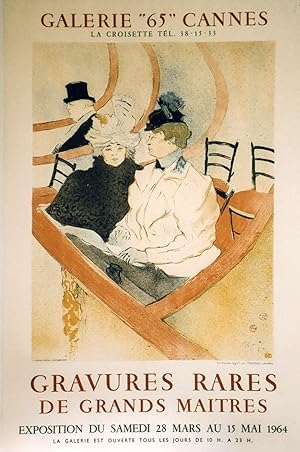

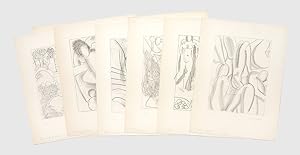
![Bild des Verkäufers für A Book of Cats, Being Twenty Drawings by Foujita [UNIQUE COPY, WIYH THE ADDITIONAL SUITE OF PLATES, THREE SIGNED IN PENCIL] zum Verkauf von ERIC CHAIM KLINE, BOOKSELLER (ABAA ILAB)](https://pictures.abebooks.com/inventory/md/md31011674445.jpg)
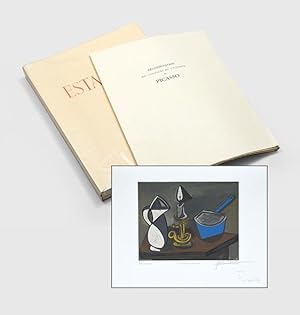
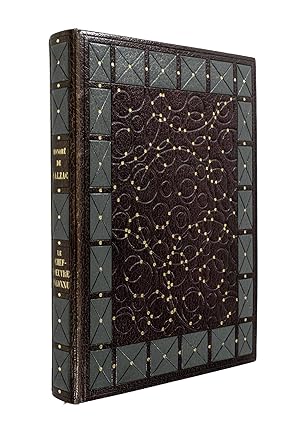
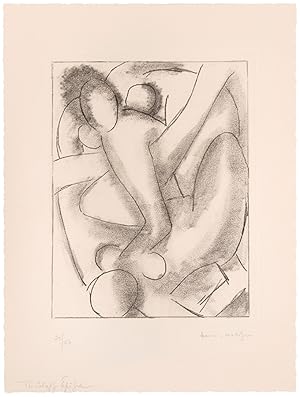
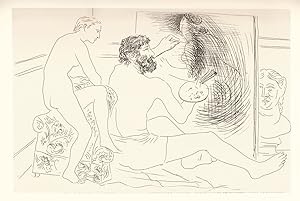
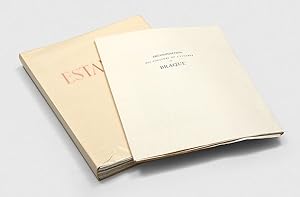
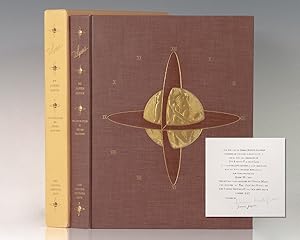

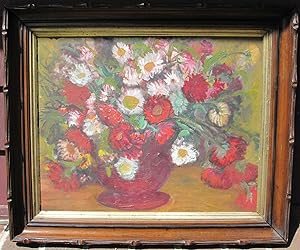
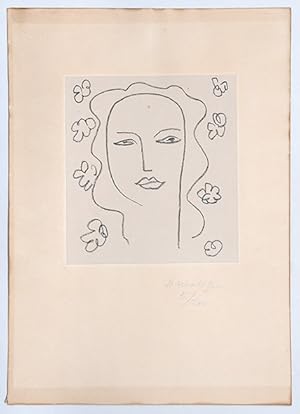
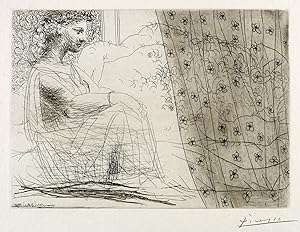
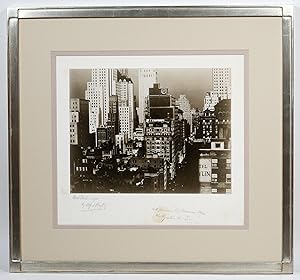

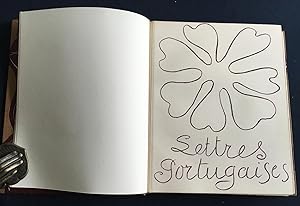

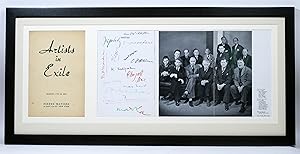
![Bild des Verkäufers für [Armory Show, 1913] Catalogue of the International Exhibition of Modern Art. Association of American Painters and Scultors zum Verkauf von Földvári Books](https://pictures.abebooks.com/inventory/md/md31428640538.jpg)
